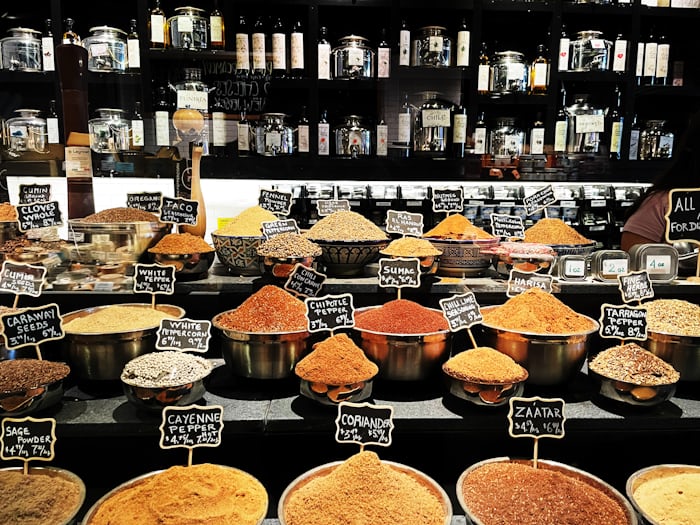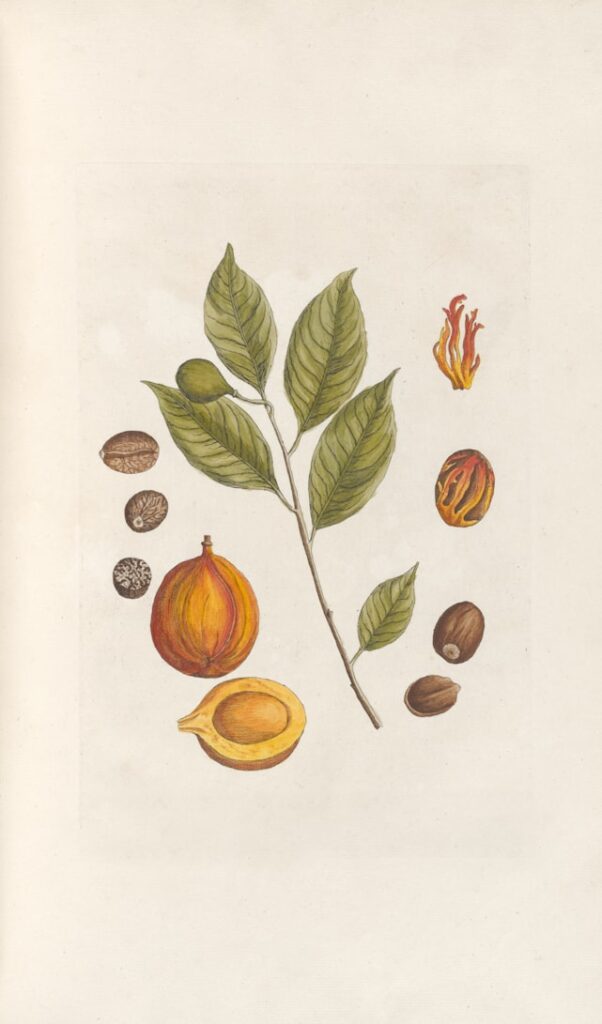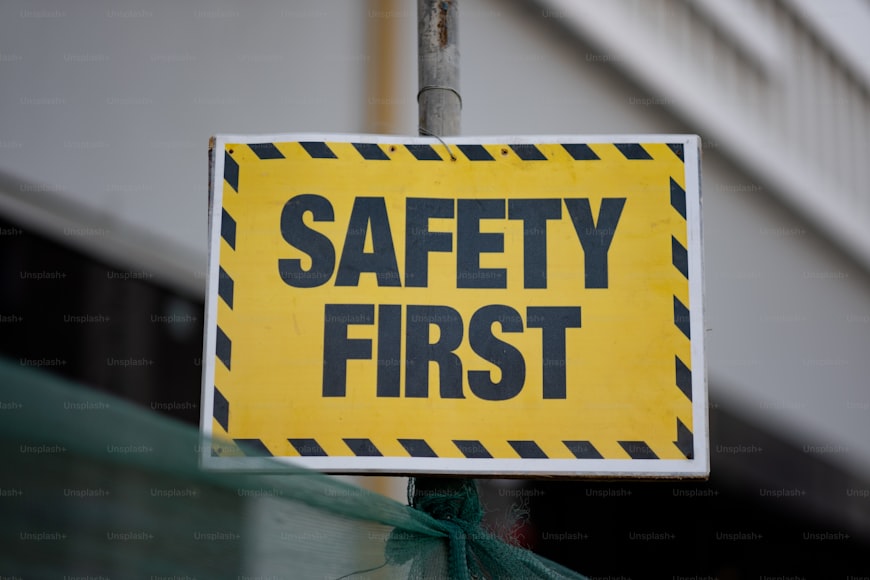Table of Contents
Accidental nutmeg intoxication, while rare, is a real phenomenon that can turn a cozy baking session into an unexpected medical adventure. This potential hazard might be unknowingly set in motion as you’re baking, say, your grandmother’s famous apple pie, generously sprinkling nutmeg for that perfect autumn flavor.

Little do many realize that their innocent pursuit of a delicious dessert could lead to such an unusual predicament. Nutmeg, that innocent-looking spice lurking in your kitchen cabinet, harbors a secret life as a psychoactive substance when consumed in large quantities. It’s the culinary equivalent of a wolf in sheep’s clothing – harmless in small doses, but potentially troublesome when overindulged. In this article, we crack open the shell of this aromatic nut and explore the surprising world where gastronomy meets toxicology.
Understanding Nutmeg: Culinary Use and Chemical Composition
You’ve probably sprinkled nutmeg on your eggnog or added it to your pumpkin pie filling, but did you know this common spice can lead to accidental nutmeg intoxication? Before we dive into the how and why of accidental nutmeg intoxication, let’s unwrap the mystery of this aromatic seed.
What Is Nutmeg?
Nutmeg is the seed kernel from the fruits of several species of evergreen trees in the genus Myristica. The most important commercial species is Myristica fragrans, an evergreen tree native to the Banda Islands in the Moluccas of Indonesia.

Culinary Uses: Beyond the Holiday Season
While many associate nutmeg with holiday baking, its uses extend far beyond seasonal treats. Here’s where you might encounter nutmeg in your culinary adventures:
– Baked goods: cookies, cakes, and pies
– Beverages: eggnog, mulled wine, and some coffee drinks
– Savory dishes: potato dishes, meat seasonings, and cheese sauces
– Processed foods: as a flavoring in sausages and canned foods
Most recipes call for small amounts of nutmeg, which is crucial in preventing accidental nutmeg intoxication.
The Chemical Composition: Nature’s Complex Mix
Nutmeg’s unique flavor and potential for accidental nutmeg intoxication come from its complex chemical makeup. Key components include:
1. Myristicin: This compound is responsible for most of nutmeg’s psychoactive effects and plays a significant role in accidental nutmeg intoxication.
2. Elemicin and Safrole: These substances contribute to nutmeg’s flavor and aroma but can also play a part in accidental nutmeg intoxication when consumed in large quantities.
3. Essential Oils: Nutmeg contains about 10% essential oils, which give it its characteristic scent and taste.
4. Fixed Oils: These make up about 30% of nutmeg and include fatty acids like myristic acid.
5. Other Compounds: Nutmeg also contains proteins, starch, and various minerals.
Why This Matters for Your Health
Understanding nutmeg’s composition is crucial for preventing accidental nutmeg intoxication. While the risk of accidental nutmeg intoxication from normal culinary use is extremely low, being aware of its potential effects can help you use this spice safely. Remember, the key to enjoying nutmeg without risking accidental nutmeg intoxication is moderation. Stick to recommended amounts in recipes, and avoid consuming large quantities of raw nutmeg. By understanding what’s in your spice rack, you can make informed decisions about your diet and reduce the risk of unexpected health issues like accidental nutmeg intoxication.

How Nutmeg Affects Your Body
Accidental nutmeg intoxication isn’t your typical food-related issue. Here’s what happens when you consume too much of this holiday spice:
1. Myristicin: The main culprit in nutmeg intoxication is myristicin. This compound is similar to mescaline, a psychoactive substance. When consumed in large amounts, it can cause hallucinations and other mind-altering effects.
2. Liver Processing: Your liver metabolizes myristicin into MMDA, a compound similar to the drug MDMA. This process is why the effects of nutmeg intoxication can last longer than you might expect.
3. Neurotransmitter Impact: Nutmeg compounds can affect your brain’s neurotransmitters, particularly serotonin and dopamine. This interaction contributes to the mood-altering effects of nutmeg intoxication.
Remember, these effects only occur with excessive consumption. Your pumpkin spice latte isn’t going to send you on an unexpected trip!
Spotting Nutmeg Intoxication: Signs and Symptoms
Accidental nutmeg intoxication can be uncomfortable and potentially dangerous. Here’s what to watch out for:
– Digestive Distress: Nausea, vomiting, and abdominal pain are common early signs.
– Dizziness and Disorientation: You might feel off-balance or confused.
– Dry Mouth: Your mouth may feel unusually dry.
– Heart Racing: Increased heart rate and palpitations can occur.
– Visual Changes: Some people experience blurred or double vision.
– Hallucinations: In severe cases, you might see or hear things that aren’t there.
– Extreme Drowsiness: You could feel excessively sleepy or lethargic.
Symptoms typically appear 3-8 hours after ingestion and can last for 24-48 hours. In rare cases, they may persist for several days.If you suspect accidental nutmeg intoxication, it’s crucial to seek medical attention. While most cases resolve on their own, severe intoxication can lead to more serious complications.

Remember, enjoying nutmeg in normal culinary amounts is generally safe. It’s only when large quantities are consumed that these effects become a concern. Stay spice-wise and keep your nutmeg use to recipe-recommended amounts!
Treatment and Prevention of Nutmeg Intoxication
If you’re concerned about accidental nutmeg intoxication, it’s important to know both treatment options and prevention strategies.
Treatment Approaches
1. Supportive Care: The primary treatment for accidental nutmeg intoxication is supportive care. This may include:
– Intravenous fluids to prevent dehydration
– Anti-nausea medication
– Monitoring of vital signs
2. Activated Charcoal: In some cases, activated charcoal may be administered to help absorb the toxins.
3. Symptom Management: Treatments are aimed at managing specific symptoms as they arise.
4. Medical Monitoring: Patients are usually monitored for 24-48 hours as symptoms can last for several days.

Prevention Strategies
1. Use Recipes: Follow recipes carefully and don’t exceed recommended amounts of nutmeg.
2. Measure Accurately: Use proper measuring spoons rather than estimating.
3. Store Safely: Keep nutmeg out of reach of children and clearly labeled.
4. Education: Learn about the potential effects of nutmeg intoxication.
5. Avoid Misuse: Never use nutmeg for recreational purposes or as an untested home remedy. Remember, while accidental nutmeg intoxication is rare from culinary use, being informed helps ensure safe enjoyment of this popular spice.
#
